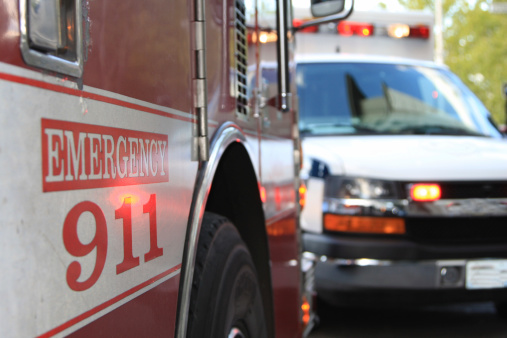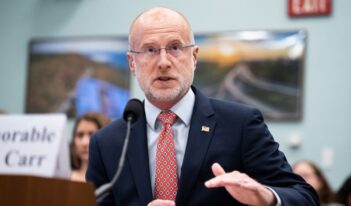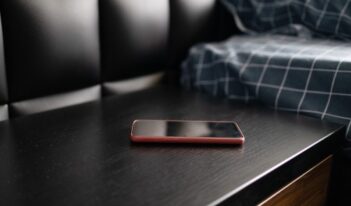
FCC issues final rule increasing 911 operators’ ability to locate wireless 911 callers.
In an emergency, time is of the essence. If you call 911 from a landline, the wire connection immediately provides the operator with your location so that emergency responders can arrive quickly at the correct scene and provide assistance. But the story is very different if you call 911 from your mobile phone. Responders cannot know instantly where you are.
Under a new rule adopted by the Federal Communications Commission (FCC) earlier this month, that will soon change. The new rule requires that 911 operators be able to identify accurately wireless callers’ locations, regardless of whether the call is made indoors or outside. The rule requires both 911 call centers and cell phone service providers to implement new technology to achieve these accuracy goals over the next few years.
Today, more than 70% of 911 calls are placed using cellular phones. That number will only increase as more American households forgo landlines. Emergency calls made with mobile phones currently do not transmit a location. In fact, a smartphone app, such as Uber, is often better able to pinpoint your location than a 911 call center.
After receiving a call, the 911 center must request the phone’s location from the cell phone network and, frequently, the operator only receives an estimate based on the transmission tower’s location. Responders waste valuable time attempting to locate the emergency and may not find the caller until it is too late.
While requirements existed for locating cellular 911 calls originating outdoors, these requirements were in need of strengthening. Moreover, no location accuracy requirements existed for 911 calls made from wireless phones indoors. As FCC Commissioner Jessica Rosenworcel recently said, if you could not provide a location for an indoor 911 call from a cell phone, “your best bet would be to cross your fingers and hope and pray.”
According to a study conducted by Fairfax County, Virginia, a large suburb of Washington, D.C., 75% of cell phone 911 calls in the county in 2014 did not include a precise location.
The FCC’s new rule will slowly increase accuracy requirements over the next eight years. It requires national cell phone service providers to give 911 call centers the caller’s location, at least within fifty meters, for 40% of all wireless 911 calls within two years and 80% within six years. The standards are slightly lower and the implementation timeline is longer for smaller, local cell phone service providers.
Moreover, the rule requires that 911 operators be able to pinpoint a vertical location. This advancement is critical, particularly in crowded urban areas, where even a precise geographic location conveys insufficient information to actually locate the emergency (for example, an emergency could be on any of an office building’s sixty floors). The goal is to provide a “dispatchable location” such that emergency responders know precisely the suite and the floor where the emergency is located.
Within three years, nationwide cell phone carriers must submit to the FCC a proposed system for identifying the vertical location of a caller, whether by giving an x-axis position or providing a dispatchable location. Within eight years, a vertical location system must be in place in the fifty largest cellular market areas.
Allowing 911 operating centers to pinpoint a precise indoors location will “most likely be through the use of in-building location systems and network access devices.” Carriers want to establish a National Emergency Address Database (NEAD), which would match Wi-Fi access points to dispatchable locations. Consequently, meeting the benchmarks for accurate location will require cooperation from building owners. The FCC found that implementing such technology was feasible over the proposed timeline, particularly in light of the increased sales of smartphones and installation of Wi-Fi access points in public locations.
A number of large cell phone service providers commented on the proposed rule, submitting a roadmap for how they intended to enhance the ability of 911 centers to pinpoint the location of a cell phone call. Within the next two years, the providers intend to introduce “VoLTE-capable handsets” that can deliver an accurate dispatchable location. While the roadmap did not meet all of the benchmarks the FCC’s proposed rule included, the FCC found that it represented significant advancements. To ensure that the benchmarks are attainable, the FCC adopted some elements of these service providers’ roadmap, extending the timeline for implementation.
The FCC’s rule requires that providers test new technologies in appropriate representative test environments. Additionally, providers must aggregate and regularly report call data from six test cities over the next eight years. The FCC will use this data, as well as response rates generated in mock testing environments, to measure progress against the benchmarks.
Some individuals argue that the ability of 911 operators to pinpoint a caller’s precise location raises privacy concerns. The rule requires that providers develop a privacy plan to protect the information stored in NEAD and “certify that they will not use the NEAD or associated data for any purpose other than for the purpose of responding to 911 calls, except as required by law.” While many agencies or companies could use or abuse this technology, FCC Commissioner Michael O’Rielly urges other agencies and Congress to ensure that such technology is not used to invade citizens’ privacy: as he recently stated, “improving location accuracy for wireless 911 callers should not happen at the expense of greater exposure to surveillance or monitoring by government officials.”
Another concern with the proposed rule was its potential tacit approval of use of non-U.S. satellite systems in pinpointing location. An emergency response system dependent on foreign satellites presents significant national security and foreign policy concerns. FCC Commissioner Ajit Pai voted to approve the rule once it made clear that “nothing in today’s decision authorizes the use of any non-U.S. satellite system in conjunction with the 911 system.” Whether providers can use non-U.S. satellites will be decided at a later date.



